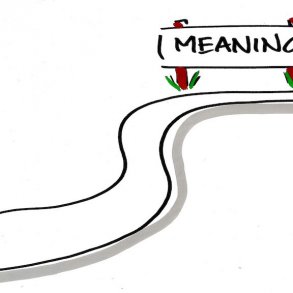By Doug Breitbart and Fabian Szulanski and originally published on medium.com
FIRST READ Part 1 of this article here.
The question is, what fundamental changes in mindset on the part of those currently in leadership positions would be required to take power and control out of the co-creative collaborative equation within large organizations? How might we provide the safety, and peace of mind for leadership to let go of their need for control as the essential active ingredient required, in order to “manage?”
The question for the employed is, what operational changes must be made to enable the regaining of trust, self-empowerment, engagement, and agency, in service to reawakening, enabling, and realizing the currently untapped generative potential being left on the table.
Abruptly withdrawing the prevailing power and control-driven form of leadership from the equation; without adequate parallel preparation of and socialization to the new self-empowered circumstance of the employees to new individual internal authority is a formula for disaster. However, if there is an institutional commitment to let go of the reins of power, and welcome employee contribution, a truly transformed power-free organization can emerge.
What are the implications and consequences of such a leadership-less organizational transformation?
Whence goes power, so goes the perception of “control” over future outcomes. It is central to the old industrial paradigm that, by exercising power and control, outcomes can similarly be predicted. Unfortunately, this correlation is not reflected in reality. As with any abstract simplification to a limited set of variables, the true complexity of human nature, collaboration, and attendant frailties have successfully defeated the best-laid plans and projections of management teams and experts for decades.
Leaders must recognize that individual power and control, exercised from the top down, in multinational corporations comprised of silos and divisions dependent upon centralized unilateral top-down decision propagation architectures are not capable of receiving, processing, analyzing, and responding to incoming needs and demands fast enough to meet today’s accelerating rate of market and global disruptive changes.
Only through thoroughly decentralized and distributed authority, sensemaking, and distributed response authority is it possible for the organization, as a living organism, to react to emergent changes and threats in real-time.
What are the implications and intrinsic opportunities that such a shift means to those who are led in the prevailing structures; and the potential benefits that may be realized by the organization?
After years and years of imposition of new programs, development agendas, transformation initiatives, and course changes, each comprised of tools, platforms, methodologies, theories, principles, practices, training, and the ubiquitous required meetings, most employees are both numbed by and inure to this endless parade of change and salvation offerings imposed top-down by C-Suite-inspired decision-making.
The result is a tremendous amount of skepticism, distrust, and materially diminished engagement and enthusiasm in the rank and file. The perception is that time and attention thus diverted is akin to adding insult to injury, leaving the beleaguered employee with less time to meet ever-increasing performance demands, in fulfillment of disassociated performance goals.
Rehabilitation of individual agency, empowerment, enthusiasm, and authority to step up, step in, and contribute; on a self-motivated and vested generative basis requires a fully supported organizational commitment, empathy, an operating value system, and authentic recognition of individual and collective generative potential and contribution of value.
This would require a true commitment of organizational resources, priority, support, and nurturance of each employee’s healing process, transitioning from being an objectified unit of production to an important, valued; and a material contributor to and co-creator of the organization to which they belong and that they serve.
If the tip of the organizational hierarchy is not prepared to acknowledge the need for help, and the employees are not given the means to feel truly empowered and in control of their own co-creative process and contribution, then the old paradigm of fear and chaos used to perpetuate the need for leadership will rear its head; and, the reinstatement of old-style power, control and authority over will return, along with all of the attendant dysfunction and employee despair.
No matter how many ways the leadership lily is gilded, at the end of the day, it intrinsically evokes, and as a term is contaminated by the connotative association with the exercise of the power of one over others.
It is so fundamentally and culturally imprinted on everyone in the developed world, that even gentler less charged titles, such as facilitator, moderator, consultant, host, or coach have enough emotional “leadership” DNA, by association, so as to trigger an autonomic reconfiguration of the employee to a submissive and almost robotic follower, awaiting instructions.
In the next chapter of this series, we will seek to unpack the dimensional benefits both for the employed, and the employer of an individual — awakened, and acknowledged as a fully capable, empowered, resourceful, valued contributor to the best future manifestation of their organization in the world.
Republished with permission.
Featured Image and some paragraph spacing added by Enlivening Edge Magazine.





Doug and Fabian, I wonder at your continued wording of “employer-employed.” Since what you’re talking about is generalizable, why not use languaging of “workers” to apply to everyone in all possible structures of relationships among the people in an organization?